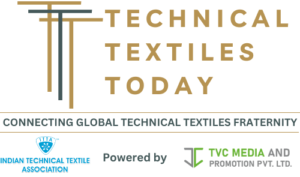Circular Textile Economy in Brandenburg
A new policy paper, Closing the Loop in the Textile Industry: Value Creation in the State of Brandenburg, examines how the region can benefit from a circular textile economy. Based on the „TexPHB“ feasibility study funded by the Brandenburg Ministry of Climate Protection, it demonstrates how textile waste can be integrated into new value chains. Consequently, Brandenburg could create both environmental and economic value.
The Challenge of Textile Waste
Textile production consumes significant resources and produces large amounts of waste. For example, in 2020, the EU generated 6.95 million tonnes of textile waste. Moreover, globally, 92 million tonnes end up in landfills or incinerators each year. Mixed polyester textiles, including fast fashion, workwear, and industrial cleaning fabrics, are particularly difficult to recycle. Therefore, the EU’s Circular Economy Strategy strongly encourages circular processes in the textile sector.
From Research to Policy Recommendations
Fraunhofer IAP, Beneficial Design Institute GmbH, and matterr GmbH studied how polyester textile waste can be converted into polyhydroxybutyrate (PHB), a biodegradable plastic.
Dr. Tim Seedorf, Head of Research & Innovation at matterr GmbH, explains: “Our matterr process recovers terephthalic acid (TA) and ethylene glycol (EG) from polyester waste in virgin quality. This means they can be reused for new polyester production.”
Additionally, Dr. Maren Wandrey of Fraunhofer IAP notes: “We demonstrated that EG can also be converted into PHB using bacteria.”
Furthermore, the Beneficial Design Institute highlights that creating a textile hub in Brandenburg could strengthen the regional circular economy. As a result, sustainable textile use and new value chains could be promoted. The policy paper translates these findings into concrete recommendations for policymakers.
PHB: Advantages for Economy, Society, and Environment
PHB is a fully biodegradable, resorbable, and biocompatible bioplastic. Professor Friederike von Wedel-Parlow from Beneficial Design Institute emphasizes: “PHB offers ecological benefits and economic potential. By working together, designers, researchers, and industry can create solutions that benefit both society and the economy.”
Moreover, PHB has a wide range of applications, particularly where materials remain in the environment permanently. Examples include geotextiles for erosion control, artificial shoreline reinforcement, tree and branch protection, and medical products such as sutures.
Action Plan for a Circular Textile Economy
The policy paper proposes a six-step plan to establish a circular textile economy in Brandenburg. State Secretary Dr. Haase explains: “The goal is to retain value locally, create skilled jobs, and make Brandenburg a model region in the EU. Thus, ecological sustainability and economic growth can go hand in hand.”
In addition, Brandenburg can collaborate with partners in Poland and the Netherlands. Through these partnerships, the state can strengthen its position as a pioneer in the circular economy and develop European value chains that leverage design-driven added value.
